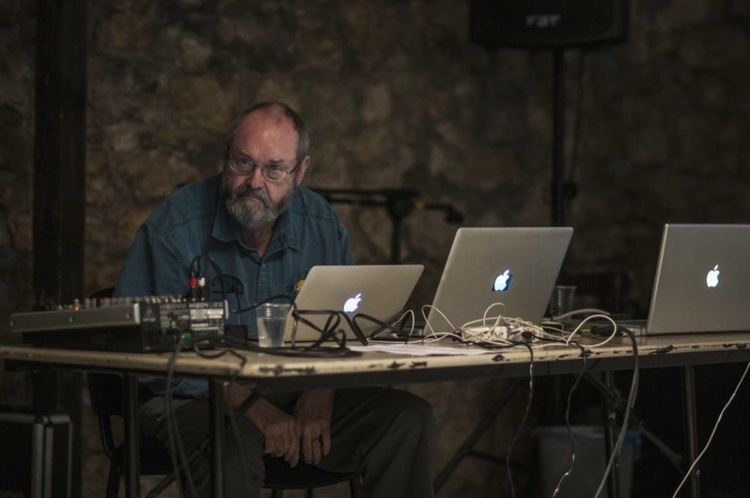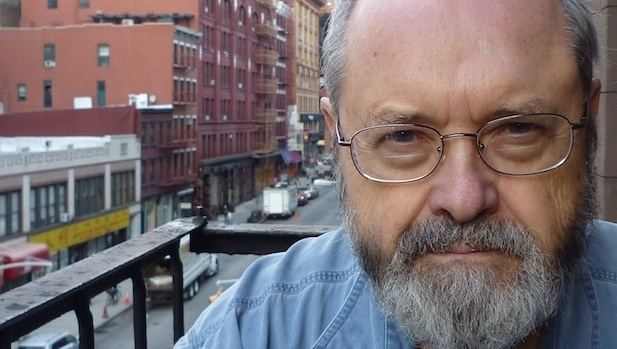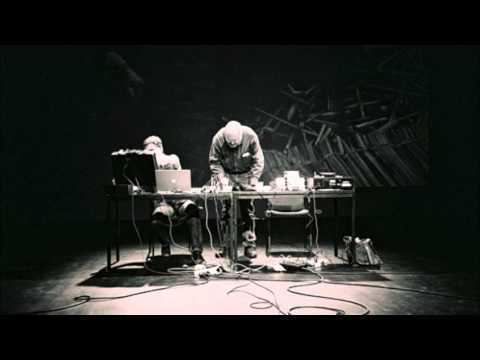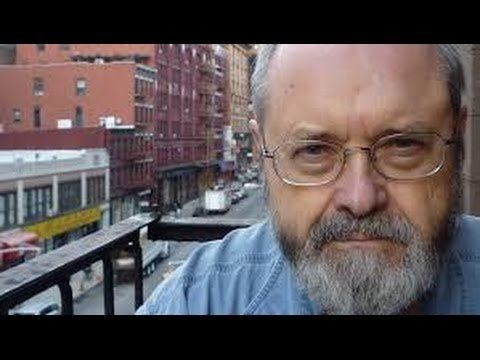Name Phill Niblock | ||
 | ||
Movies Phill Niblock: The Movement of People Working, The Magic Sun Awards Guggenheim Fellowship for Creative Arts, US & Canada Albums Touch Five, Touch Food, Touch Strings, Nothin To Look At Just A Re, Touch Works - for Hurdy Gu | ||
Phill niblock harm 2003
Phill Niblock (born October 2, 1933 in Anderson, Indiana) is an American composer, filmmaker, videographer, and director of Experimental Intermedia, a foundation for avant-garde music based in New York with a parallel branch in Ghent, Belgium.
Contents

Phill niblock hurdy hurry
Biography

After an early period studying economics (BA, Indiana University, 1956) Niblock came to New York in 1958. Initially he worked as a photographer and filmmaker. Much of this activity centered around photographing and filming jazz musicians. Thereafter he made a number of films in a series titled The Movement of People Working. Filmed in primarily rural environments in many countries (China, Brazil, Portugal, Lesotho, Puerto Rico, Hong Kong, the Arctic, Mexico, Hungary, the Adirondacks, Peru), the films look at everyday work, frequently agrarian or marine labor. These films are remarkable for their realistic quality and absence of artifice, their use of long takes in high resolution and their supposedly artless juxtaposition of compelling images in vivid colors. These scenes of the movement of human manual labor are treated abstractly without explicit anthropological or sociological meaning. As in the music, a surface slowness is countered by an active, varied texture of rhythm and form of body motion within the frame; this is what Niblock himself considers the ultimate subject matter of his films.

Niblock's first musical compositions date from 1968. Unusually, even among the avant-garde composers of his generation, he has no formal musical training. He cites the musical activities of New York in the 1960s (and occasional memorable performances, such as the premiere of Morton Feldman's Durations pieces) as a stimulus. All his compositions are worked out intuitively rather than systematically. His early works were all done with tape, overdubbing unprocessed recordings of precisely tuned long tones played on traditional instruments in four, eight, or sixteen tracks. Since the late 1990s his music has been created with computer technology, notably with Pro Tools on a Macintosh computer. His later works are correspondingly more dense in texture, sometimes involving as many as forty tracks.

Niblock's music is an exploration of sound textures created by multiple tones in very dense, often atonal tunings (generally microtonal in conception) performed in long durations. The layering of long tones only very slightly distinct in pitch creates a multitude of beats and generates complex overtone patterns and other fascinating psychoacoustic effects. The combination of apparently static surface textures and extremely active harmonic movement generates a highly original music that, while having things in common with early drone-based Minimalism, is utterly distinct in sound and technique. Niblock's work continues to influence a generation of musicians, especially younger players from a variety of musical genres.
Niblock's compositional process often begins with recordings of single, absolute tones played by a specific musician with the breathing and attack and decay edited out. Such collaborations have been crucial to his composing life, and the range of musicians with whom he has worked include David Gibson, in the cello works of the 1970s); Petr Kotik, Susan Stenger, and Eberhard Blum, on Four Full Flutes; Rafael Toral, David First, Lee Ranaldo, Thurston Moore, Susan Stenger, and Robert Poss on Guitar Too, for Four (G2,44+1x2); Ulrich Krieger, Carol Robinson, Kaspar T. Toeplitz, and Reinhold Friedl, on Touch Food; Dave Soldier and the Soldier String Quartet on Five More String Quartets, Early Winter; and many others. In the past decade he has produced several works for orchestra: Disseminate, Three Orchids (for three orchestras), Tow for Tom (for two orchestras), and 4 Chorch +1, the latter a commission for the Ostrava Music Days 2007 for chorus and orchestra with solo baritone (Thomas Buckner). The premieres of all these works have been conducted by Petr Kotik.
In performance, live musicians may play, wandering through the audience changing the sound texture through reinforcement of or interference with the existing tunings. Simultaneously, Niblock generally accompanies performances by presenting his films and videos (often those from the Movement of People Working series, or computer-driven, black-and-white abstract images floating through time). These performances fall into two types: (1) an installation of several hours' duration, with the music pieces played consecutively, with a long loop of several hours of work before repetition, and with multiple images that are shown simultaneously; or (2) a performance, with several simultaneous works of music and film, usually lasting between one and three hours. In these performances Niblock generally projects three (or more) film images simultaneously, on large screens three to four meters wide. The films are 16mm and color. The music is produced from stereo or quad tapes, with four or more speakers in the corners of the space. His more recent video pieces are played individually or with several simultaneously, using large video monitors.
Since 1985, Niblock has been the director of the Experimental Intermedia Foundation in New York where he has been an artist-member since 1968. Niblock received a 1994 Foundation for Contemporary Arts Grants to Artists Award. He is the producer of music and Intermedia presentations at EI since 1973 (about 1,000 performances) and the curator of EI's XI Records label. In 1993, he opened a house with window gallery at Sassekaai 45 in Ghent, Belgium, and, in 1997, the coordinating committee—Phill Niblock, Maria Blondeel, Zjuul Devens, Lieve D'hondt, and Ludo Engels—founded a Belgian organization, the Experimental Intermedia v.z.w., Ghent. He taught at the College of Staten Island, a CUNY school, from 1971 to 1998.
Phill Niblock's music is available on the XI, Moikai, Mode Records, and Touch labels. A double-sided DVD of films and music, lasting nearly four hours, is available on the Extreme label.
